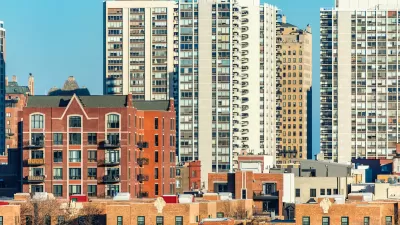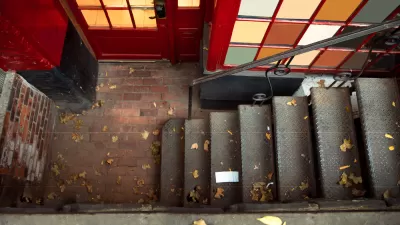In the wake of multiple building collapses in recent years, the bill seeks to identify dangerous building conditions before they escalate.

A new city law will mandate ‘proactive’ building inspections in New York City, reports Nish Amarnath in Smart Cities Dive. “Int. 0904, the Billingsley Terrace Structural Integrity bill, requires the New York City Department of Buildings to create a risk-based inspection program that can identify dangerous buildings using a model to predict the likelihood of structural failures by assessing factors such as building data, violation history and any prior facade inspection reports.”
The bill aims to prevent building collapses and dangerous conditions in older buildings by identifying risks. “Bill Int. 0904 seeks to address deficiencies in the DOB’s complaints-driven, reactive inspection process — an issue that has surfaced in the city’s aging building stock and recent incidents, including the Billingsley Terrace collapse in the Bronx and the parking garage collapse in lower Manhattan, the city council said in the release.”
If signed by the mayor, the bill would require the DOB to develop a predictive model for the inspection program that would take into account a variety of building data including “qualified exterior wall inspector certification history, prior maintenance records, the number of 311 complaints filed, permit history, the date of the most recent alteration,” as well as building age, size, materials, floors, and more. Owners of buildings found deficient would have to submit a corrective action plan to make the building safe.
FULL STORY: NYC Council approves legislation requiring proactive building inspections

Manufactured Crisis: Losing the Nation’s Largest Source of Unsubsidized Affordable Housing
Manufactured housing communities have long been an affordable housing option for millions of people living in the U.S., but that affordability is disappearing rapidly. How did we get here?

Americans May Be Stuck — But Why?
Americans are moving a lot less than they once did, and that is a problem. While Yoni Applebaum, in his highly-publicized article Stuck, gets the reasons badly wrong, it's still important to ask: why are we moving so much less than before?

Using Old Oil and Gas Wells for Green Energy Storage
Penn State researchers have found that repurposing abandoned oil and gas wells for geothermal-assisted compressed-air energy storage can boost efficiency, reduce environmental risks, and support clean energy and job transitions.

Minneapolis Bans Rent-Setting Software
Four cities have enacted restrictions on algorithmic software that can inflate rent costs.

Oakland to Add 244 New EV Chargers
Oakland plans to launch its new charging network at eight locations by the end of 2025.

Jane Goodall Inspires with Message of Hope, Resilience, and Environmental Action
Speaking in Pasadena, Jane Goodall offered a hopeful and inspirational message, urging global compassion, environmental responsibility, and the power of individual action to shape a better future.
Urban Design for Planners 1: Software Tools
This six-course series explores essential urban design concepts using open source software and equips planners with the tools they need to participate fully in the urban design process.
Planning for Universal Design
Learn the tools for implementing Universal Design in planning regulations.
Heyer Gruel & Associates PA
City of Moreno Valley
Institute for Housing and Urban Development Studies (IHS)
City of Grandview
Harvard GSD Executive Education
Salt Lake City
NYU Wagner Graduate School of Public Service
City of Cambridge, Maryland





























